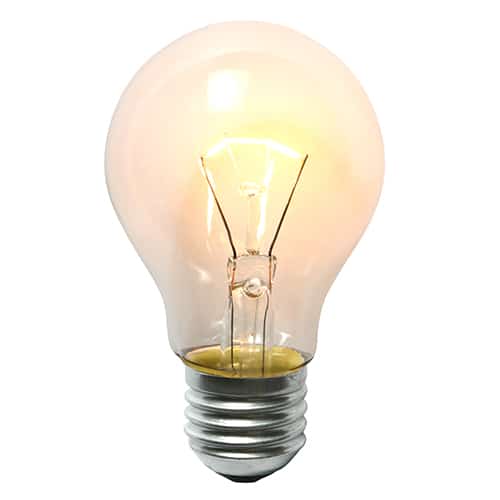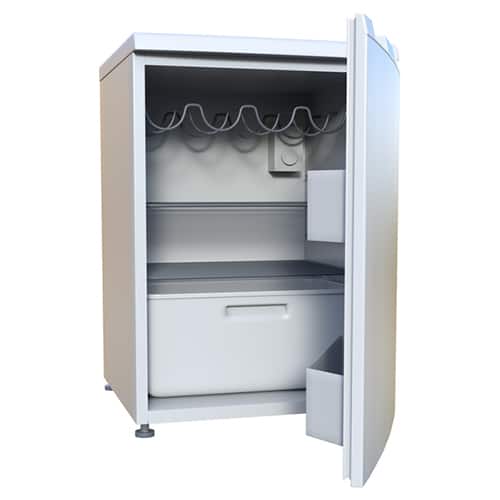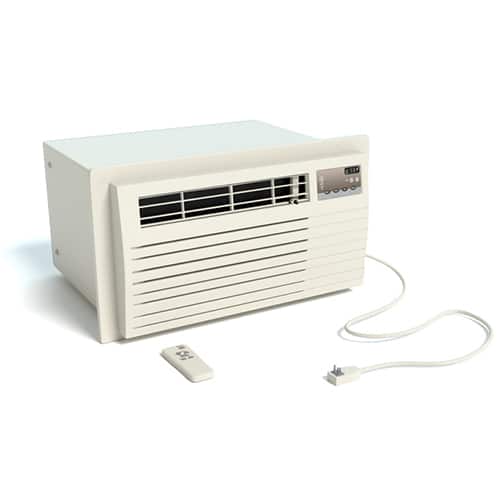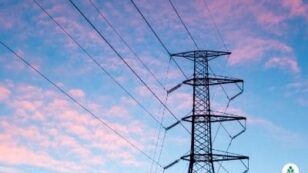

How Much Electricity Your Household Items Use (14 Common Items)
Here’s what you’ll learn in this guide:
- How much electricity mini-fridges and refrigerators use
- How much electricity ceiling fans, space heaters and window AC units use
- How much electricity dishwashers, clothes washers and dryers use
- How much electricity TVs and gaming computers use
- And more
Each product and or company featured here has been independently selected by the writer. You can learn more about our review methodology here. If you make a purchase using the links included, we may earn commission.
Whether your goal is to reduce the strain you and your home put on the environment or you’re simply looking at how to lower your energy bill and electricity use, understanding how much energy your most commonly used household items use is a great first step. So, how many kWh does a house use?
Knowing the difference between a watt vs. a kilowatt as well as the average energy draw for things like appliances and common electronics can help you figure out how many kilowatt-hours your home uses. This can also help you identify where you can conserve and reduce electricity usage, ultimately making your home more energy-efficient. Below, we’ll discuss how much energy the average household uses and how much electricity common household items consume.
How Much Energy Does a House Use?
According to the U.S. Energy Information Administration (EIA), the average home in the U.S. consumed around 10,715 kilowatt-hours (kWh) in 2020, or about 893 kWh of electricity per month1 — but consumption rates vary widely across the country. Hawaiians used the least amount of energy in 2020 at just 6,446 kWh, while homeowners in Louisiana consumed more than double that amount at 14,407 kWh.
Other factors besides geographic location also affect energy consumption. Home size, for example, plays a major role in heating and cooling costs and therefore energy consumption. The number of people living in your home will naturally affect the amount of energy consumed. Even things like electricity habits — like leaving lights on — and home age can affect energy consumption and energy efficiency. You can check your past energy bills to see how much electricity you consume throughout the year.
How Much Energy Do Household Items Use?
If you’re looking to conserve energy in your home to better the environment or slash your electric bills, it helps to understand which appliances and electronics are using the most electricity. The table below lists the top household items in terms of total energy used per year.
Further below, we’ll delve into the assumptions behind these numbers, as the way you use these items in your home will affect your actual power usage quantities.
| Household Item | Estimated Energy Consumed Per Year (kWh) |
| Washer | 140 |
| Ceiling Fan | 154 |
| Light Bulbs | 182 |
| Mini Fridge | 220 |
| Dishwasher | 251 |
| TV | 341 |
| Dehumidifier | 504 |
| Dryer | 550 |
| Space Heater | 630 |
| Refrigerator | 657 |
| Window AC | 864 |
| Gaming PC | 1,400 |
| Tankless Water Heater | 3,500 |
| Pool Pump | 4,000 |

Constellation Energy

Nationwide Service
Average cost
Pros
- Many years of experience
- Great industry reputation
- Award-winning company
- No.1 producer of carbon-free energy in the U.S.
- Makes charitable contributions
Cons
- Charges contract cancellation fees
- No prepaid or no-deposit plans

Green Mountain Energy

Nationwide Service
Average cost
Pros
- Green-e certified plans
- Wide variety of contract term options
- Low number of customer complaints
- Many years of experience
- Makes charitable contributions
Cons
- Charges contract cancellation fees
- No prepaid or no-deposit plans
- No satisfaction guarantee

Clearview Energy

Nationwide Service
Average cost
Pros
- Many years of experience
- Makes charitable contributions
- Values transparency
- All plans use clean energy
- Low rates
Cons
- Charges contract cancellation fees
- Some reports of misleading door-to-door sales
How Much Electricity Does a TV Use?

Larger televisions will naturally consume more power than smaller ones, and high-definition TVs and OLED TVs will draw more power than less-advanced models. It’s also important to remember that smart TVs continuously connect to the internet and run software updates, so they consume more power than TVs that don’t connect to the internet. TVs draw power when they are turned off, and although the draw is significantly less than when they’re turned on, they will still contribute to your utility bills.
Do TVs Use a Lot of Electricity?
In comparison to other common household items, televisions use a moderate amount of energy. They use more than many household appliances, on average, but they also run for far longer every day than most appliances like dishwashers and laundry machines.
How Much Electricity Does a Ceiling Fan Use?

This amount of electricity also assumes you use your fan 24 hours a day, seven days a week, which won’t necessarily be the case in all parts of the country. If you live in the southern states and are comfortable relying on just a ceiling fan, this number could be accurate. If you live in colder climates, it’s unlikely that you’ll use your fans during the winter months, so your consumption could be significantly lower per year than it would in warmer states like Texas, Oklahoma and Arizona. Lastly, the size of the ceiling fan matters, with larger fans consuming slightly more energy per hour running than smaller ones.
Do Ceiling Fans Use a Lot of Electricity?
No, ceiling fans are among the household items that have the lowest annual power draw. Ceiling fans are also far more energy-efficient than other cooling systems, making them a great way to cut down your electricity costs.
And although it seems counterintuitive to use a fan to keep warm, if you run your ceiling fan clockwise in the winter (it should be run counterclockwise in the summer), it will pull cooler air up toward the ceiling, making the air around the people near floor level seem warmer. This may allow you to turn down your heat several degrees and save more energy while still feeling comfortable.
How Much Electricity Does a Light Bulb Use?

Of course, larger homes and those that have multiple people living in them and using different rooms will drive up this consumption rate. The more lights you leave on for five hours a day, the higher your energy draw will be. Similarly, if you use your lights for more than five hours per day, you’ll consume more energy than this average. Finally, energy-efficient lights like LED bulbs consume less energy and will bring your consumption down.
Do Lights Use a Lot of Electricity?
Despite the fact that we tend to use lighting every single day for for an average of five hours, using lights doesn’t account for a large portion of home energy usage. Lights use less energy than most appliances and other household items.
How Much Electricity Does a Space Heater Use?

Naturally, using your space heater for longer than five hours a day or for more than three months of the year will increase its average energy consumption. Additionally, using aging space heaters or those that aren’t Energy Star-rated can bring this average consumption up as well.
Do Space Heaters Use a Lot of Electricity?
Yes, space heaters are among the top five common household items that use the most energy per year. This is especially significant because they’re often only used for three months out of the 12. They have a much higher energy draw than most other forms of heating, making space heating the least efficient way to heat your living space.
How Much Electricity Does a Refrigerator Use?

In addition to the model, how often you open your fridge and the climate you live in can affect the energy draw. Homes with more people tend to have higher consumption rates because the fridge gets opened many more times per day and has to work harder to remain cool. Warmer climates in which your indoor space is hot or humid will also increase this consumption rate.
Do Refrigerators Use a Lot of Electricity?
Refrigerators use more energy than most other major kitchen appliances, in part because they run constantly. They rank fourth overall in terms of energy draw for common household items.
How Much Electricity Does a Mini-Fridge Use?

Older mini-fridges will usually be less energy efficient, so they will consume more power on average. Excessive use — like multiple people opening the door frequently — will also bring up the annual consumption significantly. They will also tend to use more energy in areas that are hot and humid.
Do Mini-Fridges Use a Lot of Electricity?
Small mini-fridges don’t consume much energy. In fact, they’re ranked in the bottom five common household items in terms of electricity consumption. They’re often less energy efficient than full-sized refrigerators, but the small size means less power draw overall.
How Much Electricity Does a Dishwasher Use?

Running the dishwasher more frequently — either because you have more people using dishes or because you don’t fill the dishwasher for each run — will bring up the power draw significantly. Using an older dishwasher or one that isn’t Energy Star-rated will also drive up the consumption. Finally, dishwashers that have a heat option to dry the dishes tend to use more energy than those that only have an air-dry option.
Do Dishwashers Use a Lot of Electricity?
Dishwashers do use a lot of energy — usually around 1.4 kW per hour. However, most homes run the dishwasher once every other day, so the overall power consumption is low compared to other household items.
How Much Electricity Does a Washer Use?

Of course, doing more than three loads of laundry per week will mean you consume far more than the average 140 kWh per year. Choosing to run loads with hot water will increase your energy consumption as well, although the increased consumption will come directly from your water heater.
Do Washers Use a Lot of Electricity?
Washing machines use around 0.8 kW for every hour they run, which is lower than many other major appliances. Homeowners typically use washing machines less often than other appliances — an average of just three times per week — so the overall consumption is the lowest you’ll typically see from any common household item that draws power.
How Much Electricity Does a Dryer Use?

Dryers that aren’t Energy Star-rated can be a much larger drain on resources, sometimes consuming more than double the average amount of energy. Your overall consumption will also be higher if you do more than three loads of laundry per week or if you use options like “wrinkle prevent” that keep cycling your dryer on.
Do Dryers Use a Lot of Electricity?
Clothes dryers use quite a lot of energy — usually upwards of 2 kW per hour of use. However, the overall consumption is lower than many other major appliances because dryers are used less frequently.
How Much Electricity Does a Window AC Unit Use?

If you use window ACs for larger living spaces and on a 24-hour basis, your consumption will be far higher. Larger window ACs also have a higher power draw, as do those that aren’t Energy Star-rated.
Do Window AC Units Use a Lot of Electricity?
A standard window AC unit will consume around 0.9 kW per hour. This is lower than many household appliances, but they’re also used for longer than many appliances per day. Window ACs rank in the top five household items in terms of power draw, which is significant considering that they’re only used for an average of four months of the year.
How Much Electricity Does a Tankless Water Heater Use?

Homes with more residents will naturally use more hot water for washing and bathing, so energy consumption will increase with the number of people in your home. Water heaters also work harder when incoming water is colder, so your consumption will be higher if you live in a colder climate than it would in a hot climate. The average shower length can also affect how much energy your tankless water heater uses.
Do Tankless Water Heaters Use a Lot of Electricity?
Tankless water heaters use around 2.5 kW for every hour they run, which is higher than most household items. Additionally, electric tankless water heaters use more energy than nearly every other common household item overall, with the exception of pool pumps.
How Much Electricity Does a Dehumidifier Use?

Dehumidifiers will consume far more energy in areas where humidity is higher. They will also use more electricity if they need to run year-round, like in areas that remain warm and humid throughout all seasons.
Do Dehumidifiers Use a Lot of Electricity?
Dehumidifiers use around 0.28 kW per hour they are in use. This is lower than most other household appliances. However, they tend to run for longer than others at an average of 10 hours a day for half the year, so overall consumption is moderate.
How Much Electricity Does a Gaming PC Use?

The energy drawn by your gaming PC will depend largely on the specifications, including hardware and software installed. More CPU-intensive games will consume more energy, and consumption will be higher in hot climates, where PCs need to use more energy to remain cool. Of course, longer play time each day will equate to higher energy bills.
Do Gaming PCs Use a Lot of Electricity?
The power draw for a gaming PC is around 0.6 watts per hour of gameplay, which is significantly more than standard computers, laptops and gaming consoles use. Overall, gaming computers are among the top three household items for energy consumption.
How Much Electricity Does a Pool Pump Use?

Factors that affect the energy draw of your pool pump include how many seasons you keep your pool open, the size of your pool and the overall energy efficiency of your pool pump.
Do Pool Pumps Use a Lot of Electricity?
Yes, pool pumps consume more electricity in a year than any other common household appliance. Not only do they use more energy overall, but they also run for just five months of the year on average, meaning the per-hour amount of electricity used is also extremely high.
Energy Saving Tips
With the average household consuming 10,715 kWh every year and the average per-kWh electricity price in the U.S. hovering around 14.47 cents, the typical American household will pay over $1,500 on electricity every year.2 Not only is consuming this much electricity expensive, but it also puts unnecessary strain on the environment, contributing to the burning of coal, natural gas and other fossil fuels, CO2 emissions, global warming and pollution.
Luckily, there are numerous things you can do to reduce your household electricity consumption and your electric bills. Below are just some of the things that can help:
- Upgrade to energy-efficient appliances, specifically those that are Energy Star-rated
- Install a smart thermostat to regulate the temperature in your home as efficiently as possible
- Avoid using window ACs and space heaters to cool or heat large areas — use whole-home heating systems and air-conditioning equipment instead
- Upgrade light bulbs to LED bulbs or other efficient options
- Make sure you fill your dishwasher and washing machines to capacity to reduce how many times per week you need to run them – don’t run partial loads
- Take hot showers instead of hot baths, and limit shower time as much as possible
- Use ceiling fans over air conditioners whenever possible
- Do your best to limit how often your refrigerator is opened, especially in the warmer months
- Use dehumidifiers to reduce humidity and make your living space more comfortable in extreme weather; this should reduce the strain on your cooling equipment
- Limit TV and PC gaming time as much as possible
There are many additional ways to conserve energy and reduce your monthly electric bills, but the above tips should get you started in the right direction. Focusing on reducing how often you use the most energy-intensive household items on the list above — window ACs, gaming PCs, tankless water heaters and pool pumps — will have the most significant impact on your home energy use.
How to Save on Energy Rates
In addition to reducing your overall energy consumption, you can save money on your electric bills by switching to a more cost-effective energy plan. In states where the energy market is deregulated, you have your choice of energy providers and can instantly reduce your energy costs by choosing a more affordable plan that suits your needs and your budget. You can check out our guide to electricity rates and plans for more information.

 233k
233k  41k
41k  Subscribe
Subscribe 





